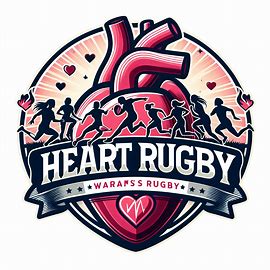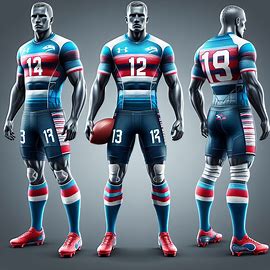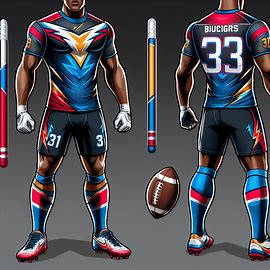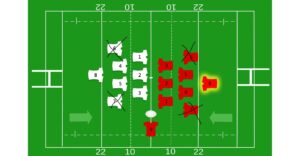In a move that will rock the sporting globe to its foundations, magazine publishing billionaire, Jed Hawkins, today announced that his new “Heart of Rugby” company will launch its inaugural competition that combines the talents of Australia’s finest Rugby League and Rugby Union players in 2026.
Hawkins made the announcement to a shocked group of journalists, sports pundits and dignitaries at a function convened at his waterside villa at Sydney Harbour’s Forty Baskets Beach yesterday.

“I grew up loving both rugby codes and I hated the fact that so many of the individuals who ran the two sports saw each other as competition… as enemies,” he said to the gathered crowd. “I thought it was boorish and childish. With the global popularity of Soccer, Basketball, Cricket, Baseball, US Football etc surely, if the Rugby codes could work together, instead of against each other, they could become a formidable competitor in national and international sports markets. Perhaps even the premium product!”
While Hawkins intends to take his new product to the world, his initial experimental market will be in Australia. The new competition is set to include twelve new teams, (across major Australian cities and regions), who will play twenty-four rounds of a hybrid League and Union (Rugby-style) sport before culminating in a six-team play-off series at the conclusion of the season. Hawkins claims to have secured the signatures of over one-hundred elite athletes, so far, from the two sports that will make up the core of the twelve new teams.
While no announcements have been made yet about what stars of the existing sports will be defecting to the “Heart of Rugby”, Hawkins says that the new competition will fail if he it is not able to secure the best of the best, so that is what he intends to deliver. He promised that team and player announcements would be made in coming months.

“Watching the Wallabies getting pulverised by ordinary Springbok, English, French and Irish teams has been heart-breaking for me when players of the calibre of Cleary, Ponga, Walsh, Haas, Hynes and Fafita, (who should be available to the Australian Rugby Union team), are running around in Rugby League. It just doesn’t make sense to me. I played both sports as a kid… and as an adult.. and loved them both… so it confounded me why some of the best athletes in Australia shouldn’t be able to play both games, too,” Hawkins said. “Many of the greatest players from both Rugby codes will join in the fun in the ranks of ‘Heart of Rugby’. My own resources… plus significant international investors… will enable us to offer pay packets that will interest the highest- level players.”
Hawkins withheld any specifics on who foreign backers might be but hinted that some of the big money coming from overseas would shock the sports and entertainment world once announced.
“I am not free to reveal the names of our international investors at this point,” said Hawkins, “but let me just say that Rugby has believers (many who played Rugby in their College years) who hold iconic positions within the entertainment and arts industries in The United States and Europe. Some big stars will not only be financially supporting us but will be using their star power to promote the new League in coming months. More to come on that!”

While Hawkins made it clear that the “Heart Of Rugby” competition was a business designed to make money, he suggested that he wants to see the games of Rugby League and Rugby Union benefit from the changes the new organisation is instituting. He made it clear that if he didn’t believe that the men and women, and the boys and girls, who play and support the games don’t have an enhanced sporting and life experience through the work of “Heart of Rugby” he wouldn’t be leading these changes.
“I’m not sure how long it would take… or indeed if it is even possible… but, in the longer term I would like to see the Australian Rugby League and Rugby Union administrations amalgamate. Even if that doesn’t happen, I don’t see why the two groups can’t work together, in the future, for the betterment of both sports and the betterment of the hybrid version,” added Hawkins. “When our new game goes global that means former League and Union players will be able to represent their countries in new look “Heart” international team competitions. In the meantime, my goal would be to find ways for Union players (who come over to “Heart”) to be eligible for Kangaroo selection, and for former League “Heart” players to be able to play for the Wallabies. That would throw a cat amongst the pigeons at the various Rugby World Cup Competitions.”
When questioned about what the hybrid game would look like Hawkins responded that the game they are drawing up will focus on what the developers believe are the strengths of both games… and include a few ideas shamelessly pinched from a few other sports as well.
“We are looking at eleven player teams much like we currently have in Soccer. A six-man scrum with no flankers. Behind the scrum will be five backs. From Union we will have contested scrums and line-outs to put the ball back into play after violations and stoppages. The other Union element that we think is really important to preserve is that play will be dynamic. In other words, play will not stop when an athlete is tackled, as it currently does in League. There will be no play-the-ball. As in Union, players will contest for the ball at the break-down – meaning rucks and mauls will be part of the game.”

“In many other aspects, though, the game will be similar to League,” added Hawkin. “Possession of the football will not be unlimited. An attacking team will only be allowed ten “phases” of attacking “break-downs”. Thirty phases on an opponent’s goal line in an attempt to win dodgy penalties or grind out tries will be a thing of the past. We want to encourage skilful, tough, and resolute forward play but, in a sport where we want exciting ball movement, we will insist on limits to forward dominated play. If a team are unable to score after their tenth phase, then possession will revert to their opponent. As in League, if you haven’t achieved something by your next to last play opportunity, then you will have to try something different… or lose the ball!”
“Also, defending players who are not committed to contesting a ruck or maul will be required to stay back five meters from the gain-line until the ball emerges from the ruck… somewhat similar to Rugby League,” said Hawkins. “Also similar to Rugby League, a team that kicks for touch from a penalty would be allowed the option of taking a tap kick as an alternative to forming a lineout with the throw in. In a shameless pinch from American Football, we are considering allowing one forward pass per phase, on the condition that the receiving player is “on-side” (behind the gain-line) as the passer releases the ball. Occasionally, in Union and League, teams try this strategy using a kick across field. It’s considered a kind of trick play. Well, we will allow a pass or a kick to go forward so long as the intended receiver stays on-side. Hopefully this will mean an exciting

aspect of the game will not-longer be considered an occasional ‘trick’ but will become a regularly used attacking option. Sound like fun? We think so.”
When Hawkins threw the gathering over to questions, much of the focus was on which media organisations would have rights to broadcasting the new league and whether the competition would be shown free-to-air. Hawkins again kept his cards close to his chest.
“Sorry. I wish I could reveal more on this subject,” he responded, “but, while we have a wonderful organisation or two committed to the project, final details on the process and approach are still being negotiated with the bodies who will be involved so please be patient for a few more weeks and all will be revealed. Be assured, though, that the game and its wonderful players will not only deliver an awesome spectacle, but the broadcasters will also contribute to a show that surpasses anything seen in sport in the past.”

Leave a Reply